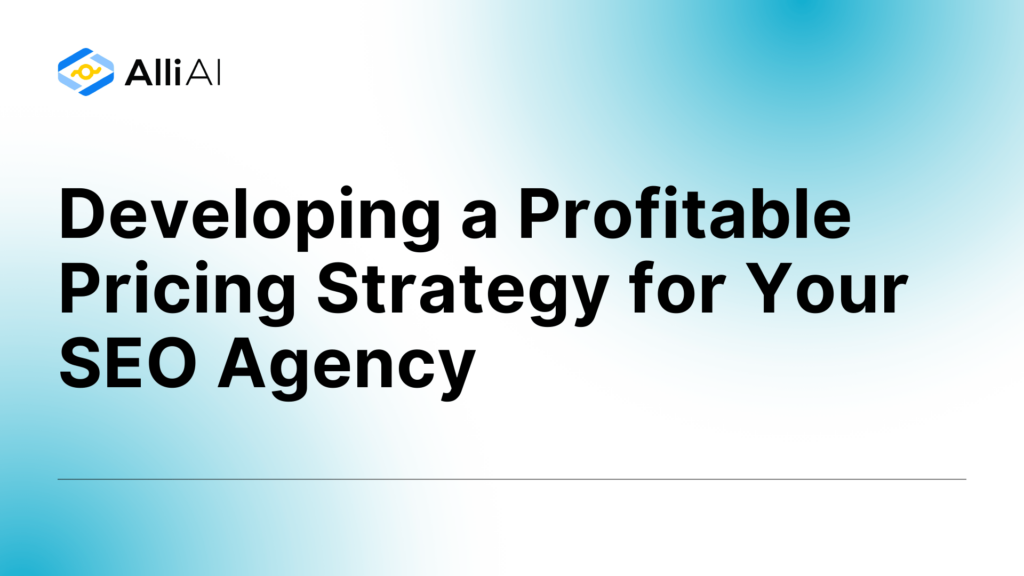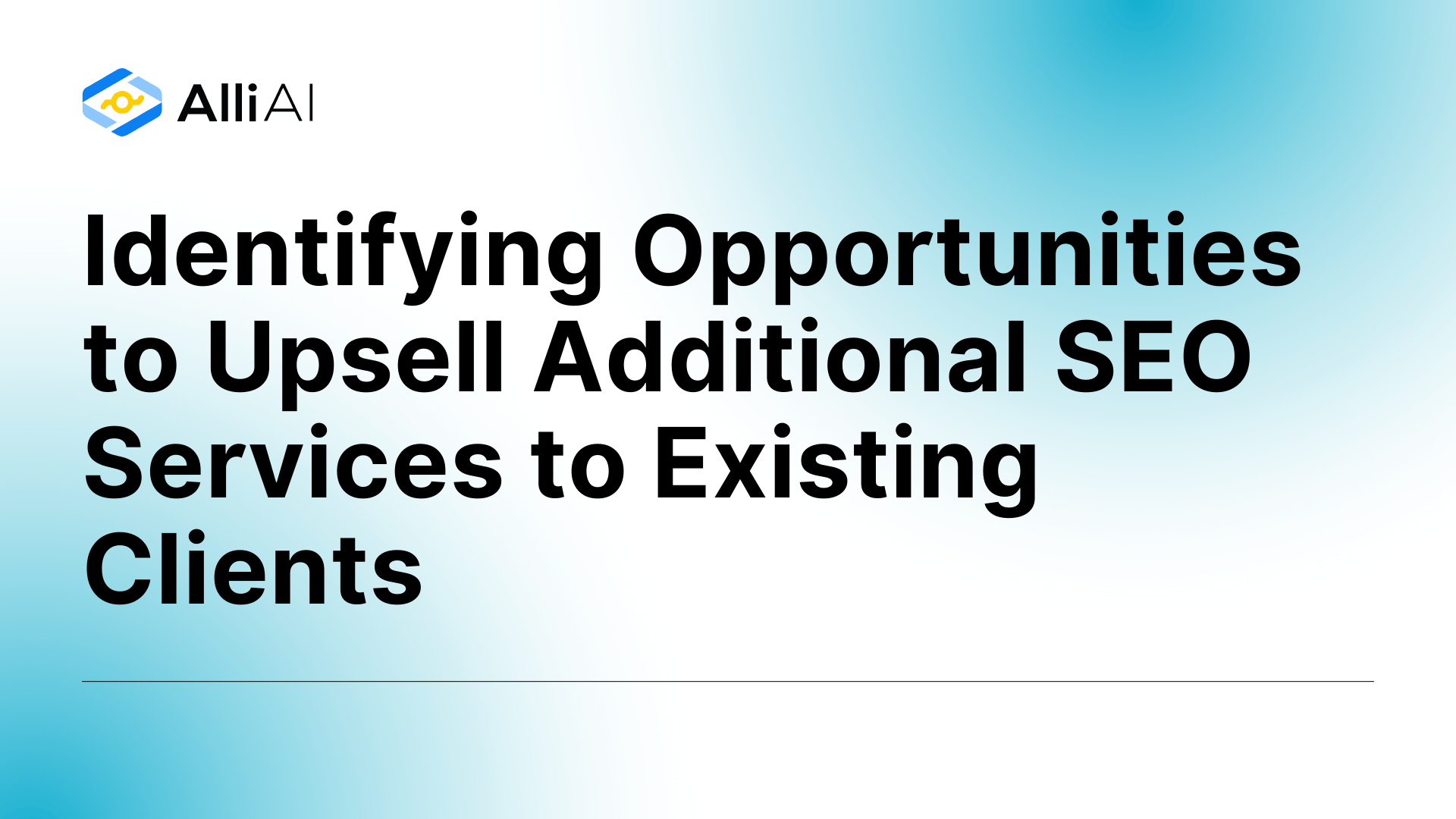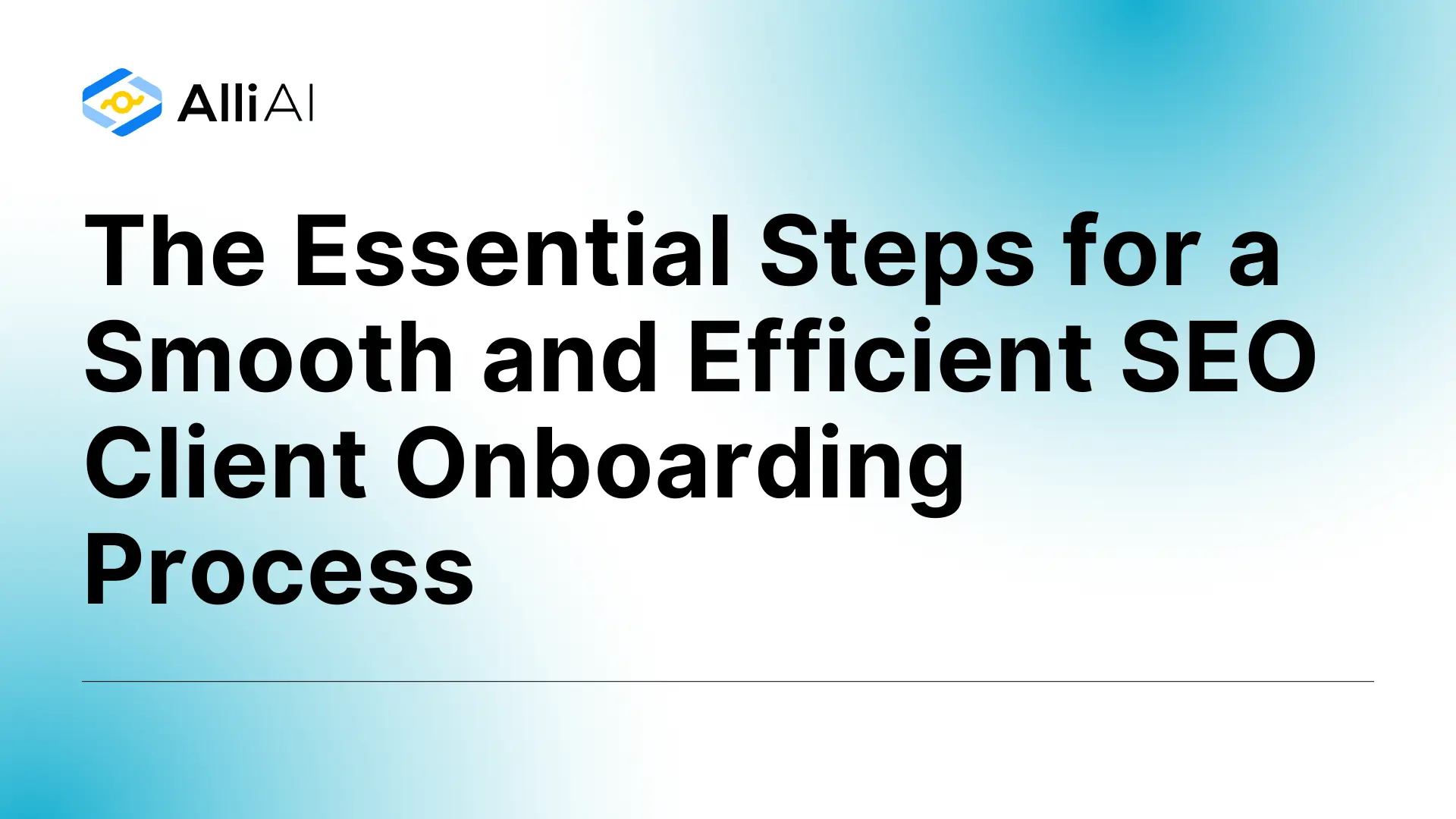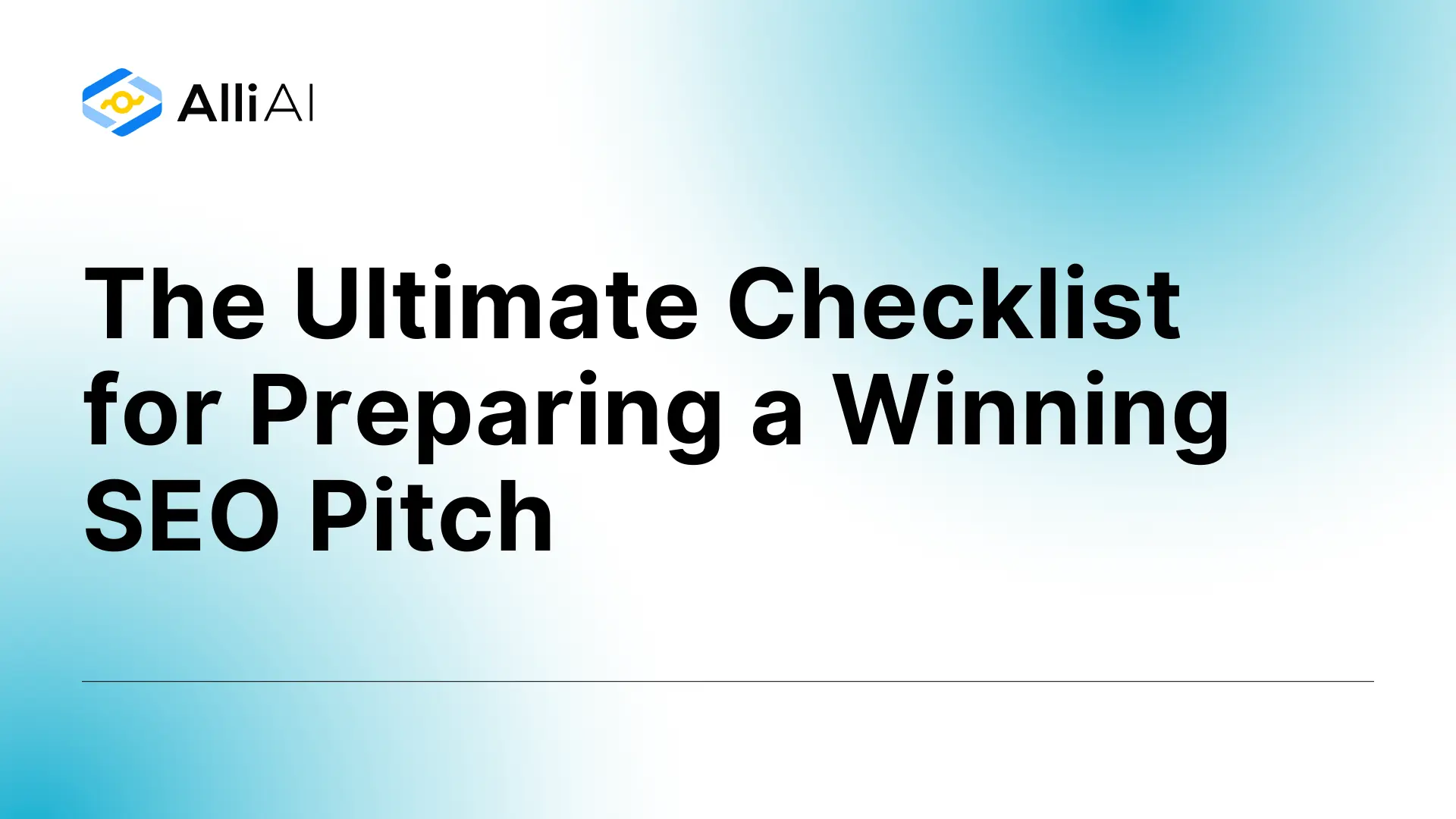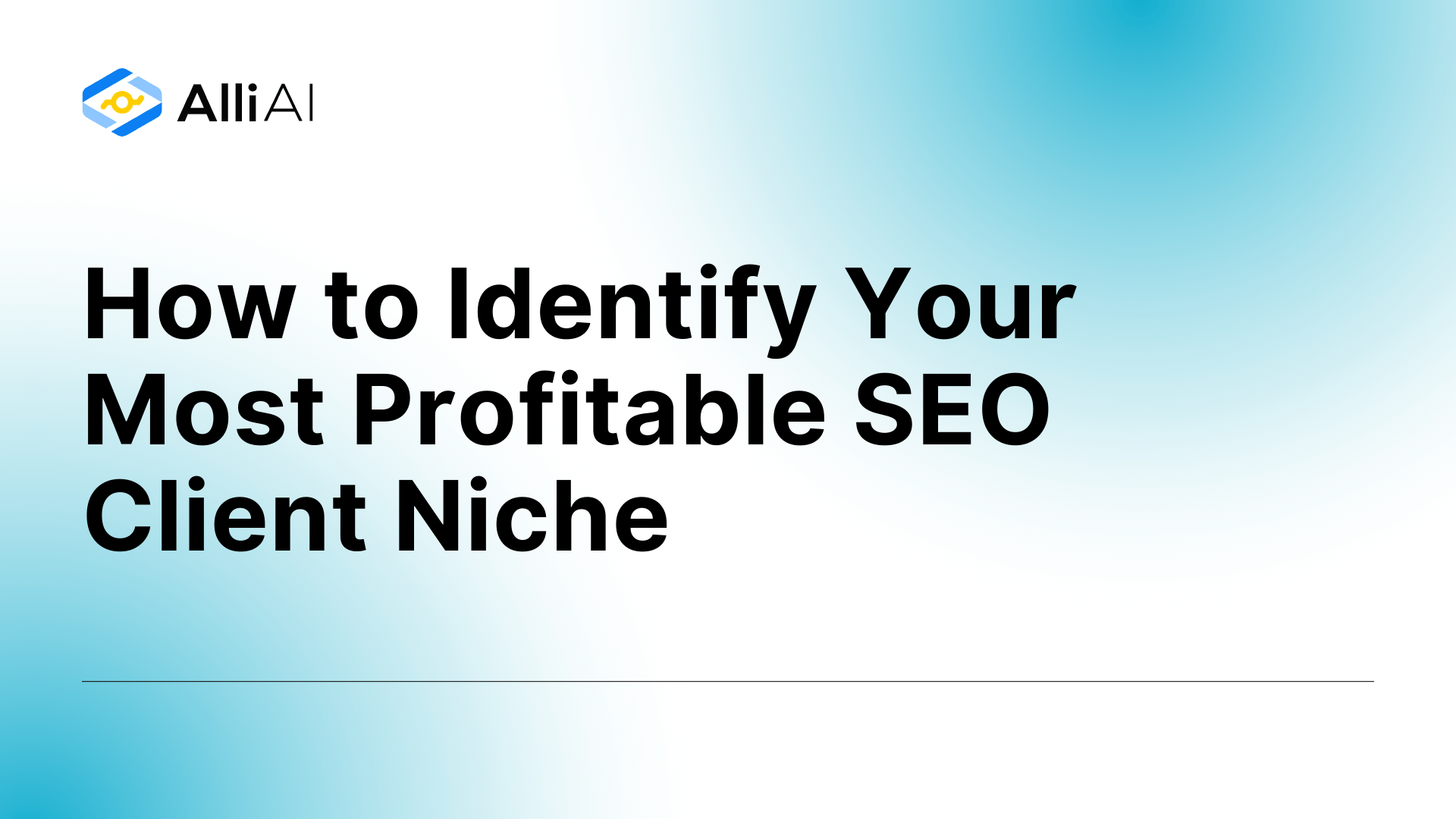Looking to boost your SEO agency’s profitability but unsure how to price your services effectively? You’re not alone. The challenge of pricing SEO services properly is one that countless agency owners struggle with—setting prices too low leaves money on the table, while pricing too high can scare away potential clients.
The “trick” is understanding the different pricing models available, knowing your operational costs inside and out, and clearly communicating the value you deliver. This strategic approach to pricing can transform your agency’s financial performance while attracting and retaining the right clients.
I’ve analyzed comprehensive research on SEO agency pricing strategies and distilled the findings into this practical guide. By implementing these strategies, you’ll be able to develop a pricing approach that maximizes profitability while positioning your agency effectively in the competitive SEO landscape.
Step #1: Decode the Available SEO Pricing Models
The foundation of any profitable pricing strategy starts with understanding the different pricing models at your disposal. Each model comes with distinct advantages and disadvantages that directly impact your profitability and client relationships.
Monthly Retainer: This is the most widely adopted model in the SEO industry, where clients pay a fixed monthly fee for ongoing services. It’s popular because it aligns with the continuous nature of SEO work and provides a predictable revenue stream for your agency.
Typical price ranges:
- Small businesses: $500-$1,500 per month
- Growing SMBs: $1,500-$5,000 per month
- National/international brands: $7,000-$15,000 per month
- Enterprise clients: $15,000-$30,000+ per month
Project-Based: In this model, you charge a fixed fee for specific, well-defined projects with clear deliverables and timelines. This works well for discrete SEO needs like comprehensive audits or website migrations.
Typical price ranges:
- Global average: $501-$1,000 per project
- US average: $1,001-$1,500 per project
- Large-scale projects: $5,000-$30,000
Hourly Billing: This traditional approach involves charging clients based on time spent working on their account. It’s commonly used by freelancers or for handling work outside the scope of retainer agreements.
Typical price ranges:
- Global average: $75-$150 per hour
- US average: $100-$200 per hour
- Highly experienced providers: $200-$300+ per hour
Value-Based: This more strategic approach links your pricing to the anticipated business impact and value your services will deliver to the client. Rather than focusing on your inputs (time, resources), you base your fee on outcomes and the client’s potential financial gains.
Performance-Based: In this model, payment is contingent upon achieving specific, measurable results like keyword rankings or traffic increases. While appealing to clients as “low-risk,” this model carries significant risks for agencies.
Pro tip: Many successful agencies employ hybrid models, combining elements from multiple pricing structures—for example, a base monthly retainer with performance bonuses for exceeding targets.
Step #2: Analyze Your Operational Costs Thoroughly
Before setting any prices, you must understand exactly what it costs to deliver your services. This is non-negotiable for sustainable profitability, yet many agencies overlook this crucial step.
Calculate your essential cost categories:
- Software & Tools: Modern SEO requires sophisticated tools for keyword research, rank tracking, site auditing, analytics, and reporting. These subscriptions represent a significant recurring expense that must be factored into your pricing.
- Personnel Costs: Typically your largest expense category. Add up salaries, benefits, payroll taxes for all team members involved in service delivery (SEO specialists, content creators, account managers), as well as fees for contractors or freelancers.
- Overhead: Include office space, utilities, business insurance, marketing expenses, accounting services, legal fees, and administrative costs.
- White Label Costs (if applicable): If you outsource any fulfillment to white label providers, include these fees plus the time your team spends managing these relationships.
Calculate your baseline hourly cost rate by dividing your total operational costs over a specific period (monthly or quarterly) by the total number of billable hours available during that same timeframe.
This baseline rate is your profitability safeguard—every project, retainer, or hourly rate must exceed this number to ensure you’re not losing money.
Warning: Very low pricing (monthly retainers below $500) often indicates that agencies are cutting corners, using inexperienced staff, skimping on necessary tools, or simply not accounting for their full costs (How Much Does SEO Cost in 2025?). This leads to unsustainable operations and poor client results—a lose-lose situation.
Step #3: Quantify the Value You Deliver to Clients
To justify premium pricing and build strong client relationships, you need to shift the conversation from your costs to the tangible value you deliver. This is particularly important when working with decision-makers who need to justify marketing expenditures internally.
Try these effective approaches to demonstrate ROI:
- Link SEO to Business Goals: Connect your SEO metrics directly to business objectives that matter to the client. Instead of just reporting on rankings or traffic, translate these into qualified leads, sales volumes, reduced customer acquisition costs, or increased customer lifetime value.
- Create Data-Backed Projections: Develop forecasts showing the potential financial impact of your services. For example, if you can estimate a $100,000 annual revenue increase from your SEO efforts, a $10,000 project fee becomes much more justifiable.
- Compare Against PPC Alternatives: Calculate what the client would have paid for the same traffic through paid search. If your SEO efforts generate traffic that would have cost $8,000 in PPC spending, but your monthly fee is only $3,000, the value proposition becomes clear.
- Address Specific Pain Points: Frame your value in terms of solving the client’s unique challenges. If they struggle with insufficient lead flow or excessive advertising costs, position your SEO services as the solution to these specific problems.
- Showcase Case Studies: Provide concrete examples showing how you’ve delivered measurable results for similar clients.
Remember: While quantifying SEO’s precise financial impact has inherent challenges due to long lead times and multiple influencing factors, consistently communicating value in business terms rather than technical SEO jargon significantly strengthens your pricing power.
Step #4: Map the Competitive Landscape
Understanding your competitors’ pricing strategies provides essential context for positioning your own services effectively. However, this isn’t about copying their prices—it’s about identifying opportunities to differentiate your offering.
Conduct thorough competitor research:
- Identify direct competitors with similar size, geographic focus, service specializations, and target clientele.
- Analyze their public information including websites, service pages, downloadable guides, and case studies for clues about pricing models and positioning.
- Leverage industry surveys and reports to understand general market benchmarks.
- Consider “mystery shopping” (if appropriate) to gather direct insights into competitor pricing and sales processes.
Pay attention to these key factors affecting competitor pricing:
- Agency Size & Reputation: Established agencies with strong track records typically command higher prices
- Location: Agencies in major metropolitan areas or high-cost regions generally charge more
- Specialization: Deep expertise in competitive niches (legal SEO, SaaS SEO, enterprise e-commerce) often justifies premium rates
- Service Breadth: Full-service digital agencies typically price differently than boutique SEO firms
- Target Clientele: Agencies serving enterprise clients have significantly different pricing structures than those focusing on small local businesses
Warning: Pricing significantly below market rates often signals lower quality or an unsustainable business model. Meanwhile, charging substantially above competitors requires clear justification through demonstrably superior expertise, results, or service.
For example: If most competitors in your market charge $1,500-$2,500 monthly for small business SEO services, positioning yourself at $3,000+ requires clearly communicating unique value differentiators that justify this premium.
Step #5: Determine Your Strategic Market Position
How do you want potential clients to perceive your agency? Your pricing is one of the most powerful signals you send about your position in the market.
Choose from these strategic positioning options:
Premium Positioning:
- Target clients: Those who prioritize expertise and results over cost savings
- Price points: Top-tier monthly retainers ($10,000-$15,000+), high hourly rates ($200-$300+)
- Requirements: Strong track record, specialized skills, exceptional service
- Best pricing models: Value-based or premium retainer
Mid-Range Positioning:
- Target clients: Small-to-medium businesses requiring solid SEO expertise without enterprise budgets
- Price points: Competitive retainers ($2,000-$7,000/month), hourly rates ($100-$200)
- Requirements: Clear value proposition, efficient processes, consistent communication
- Best pricing models: Retainer and project-based
Budget/Value Positioning:
- Target clients: Startups, small local businesses, clients with limited marketing budgets
- Price points: Lower retainers (below $1,500/month), hourly rates under $100
- Requirements: Highly efficient processes, standardized solutions, narrower service scope
- Risks: Attracting price-sensitive clients with unrealistic expectations
- Best pricing models: Packaged solutions, performance incentives
Remember: Your chosen price point must align with your overall value proposition and service capabilities. Charging premium prices means delivering premium-level results and experiences. Offering budget pricing implies a more standardized approach with narrower scope.
Pro tip: Service packaging is an effective positioning tactic used by 85% of agencies. Creating tiered packages (e.g., Basic, Professional, Enterprise) simplifies client decision-making while clearly communicating your different service levels and corresponding price points.
Table 1: Comparative Analysis of SEO Agency Pricing Models
| Feature | Hourly | Project-Based (Fixed-Fee) | Monthly Retainer | Value-Based | Performance-Based |
| Description | Bill per hour worked | Fixed price for defined scope/deliverables | Recurring fee for ongoing services/deliverables | Price based on perceived/delivered client value/outcome | Payment tied directly to achieving specific, measurable KPIs |
| Pros | Simple, transparent (hours), flexible for scope changes | Cost certainty for client, predictable revenue (per project), rewards efficiency | Predictable revenue (agency) & cost (client), fosters relationships, supports long-term strategy | Highest profit potential, outcome-focused, builds partnerships, encourages innovation | Low perceived risk for client, payment tied to results, potentially lucrative for agency |
| Cons | Penalizes efficiency, capped earnings, unpredictable client cost | Risk of underpricing/scope creep, less flexible for changes, may not suit ongoing needs | Requires client commitment, can seem expensive upfront, needs constant value demonstration | Hard to quantify value & sell, time-consuming discovery, scaling challenges, risk if results miss | Risky for agency, hard to define KPIs, incentivizes short-term/risky tactics, narrow focus |
| Profitability | Moderate; depends on rate & utilization; efficiency doesn’t boost margin | High potential if scoped well; risk of loss if underscoped | High potential for stable profit with good retention & efficiency | Potentially highest, but depends on value assessment & delivery; carries risk | Highly variable & risky; high potential if successful, zero potential if not |
| Scalability | Low; limited by staff hours 12 | Moderate; requires strong scoping & project management | High; recurring revenue allows planning & investment | Challenging; requires high customization & deep client understanding | Difficult; high risk, complexity, potential for disputes |
| Client Perception | Transparent but uncertain cost; focus on input | Positive (cost certainty); can be transactional | Positive (predictability, partnership); requires ongoing value proof | Very positive if value clear & delivered; skepticism if unclear/unmet | Initially appealing (“no risk”); potential for mistrust over tactics/value |
| Best Suited For | Freelancers, consultants, specific tasks, scope overruns | Defined projects (audits, migrations), clear deliverables | Ongoing SEO, long-term partnerships, SMBs to Enterprise | High-value projects, strategic partnerships, experienced agencies | Clients highly focused on specific metrics (use with caution) |
Step #6: Craft Compelling, Profitable Proposals
Your SEO proposals must serve multiple purposes: persuade potential clients to choose your agency, clearly articulate your value, define the scope of work, outline pricing, and set realistic expectations.
Follow these proposal best practices:
- Start with client goals: Demonstrate understanding of their specific business objectives and frame your SEO strategy as the solution to their challenges.
- Define scope meticulously: This is crucial for protecting profitability. Include a detailed Statement of Work (SoW) that explicitly outlines:
- All included activities (keyword research, on-page optimization, content creation, link building)
- Tangible deliverables (audit reports, content pieces, monthly reports)
- Project timelines and milestones
- What’s NOT included in the fee
- Explain pricing clearly: State the pricing model, exact fee amount, payment schedule, and terms without ambiguity. For hourly work, provide estimated hours; for retainers, list specific services covered.
- Articulate value and ROI: Connect your services to the client’s business goals and reiterate the potential return on their investment.
- Outline reporting and communication: Specify how progress will be tracked, measured, and reported, including frequency of updates.
- Address scope creep proactively: Include clear language about handling out-of-scope requests, typically outlining a change order process and hourly rates for additional work.
- Showcase credibility: Include relevant experience, case studies, and testimonials that build trust.
Warning: Ambiguous scope definition is the #1 profit-killer for SEO agencies. Invest time in creating comprehensive, unambiguous SoWs to prevent misunderstandings and protect your margins.
Step #7: Implement and Measure Performance
Your pricing strategy should evolve over time based on data and experience. Establish systems to continuously track key metrics that indicate the effectiveness of your pricing approach.
Monitor these crucial KPIs:
Profitability Metrics:
- Gross profit margin per client
- Overall net profit margin
- Client lifetime value (CLTV)
- Customer acquisition cost (CAC)
Sales Metrics:
- Proposal win rate
- Average deal size
- Sales cycle length
Client Metrics:
- Client retention rate
- Client satisfaction scores
Operational Metrics:
- Team utilization rate
- Project completion time vs. estimate
Conduct regular evaluations (quarterly or annually) where you:
- Review KPIs across different pricing models, client segments, and service lines
- Gather client feedback regarding pricing and value perception
- Monitor competitor pricing and market trends
- Reassess your operational costs
- Evaluate alignment with your strategic positioning
Based on this analysis, make strategic adjustments:
- Test different price points for specific services
- Refine service packages to better meet client needs
- Adjust rates to account for increased costs or enhanced expertise
- Prune unprofitable offerings
- Implement or refine tiered pricing
- Identify upsell opportunities
For example: If your data shows that clients on 12-month retainers have significantly higher retention rates and profitability than those on 3-month contracts, you might incentivize longer commitments through preferential pricing.
Step #8: Build Long-Term Client Relationships That Support Higher Pricing
Research shows a strong correlation between client retention, agency experience, and pricing power. Agencies that excel at maintaining long-term client relationships (2+ years) successfully implement higher pricing across all models.
Focus on these relationship-building strategies:
- Deliver consistent value: Consistently meet or exceed client expectations and demonstrate clear ROI on their investment.
- Communicate proactively: Don’t make clients ask for updates. Establish regular reporting cadence and address challenges before they become concerns.
- Educate clients: Help them understand SEO processes, timelines, and how your work connects to their business goals.
- Anticipate needs: As you develop deeper knowledge of their business, recommend new strategies or services that address emerging opportunities.
- Review and refresh: Periodically reassess the client’s SEO strategy to ensure it evolves with their business goals and market conditions.
Remember: External factors like inflation and rising operational costs make periodic price increases necessary just to maintain profit margins. Having strong client relationships built on demonstrated value makes these increases much easier to implement successfully.
Pro tip: When raising prices for existing clients, provide 60-90 days notice, clearly explain the reasons (rising costs, expanded capabilities, improved results), and consider grandfathering or phased increases for long-term clients.
Taking Action: Your Next Steps
Developing a profitable pricing strategy isn’t a one-time exercise—it’s an ongoing process of refinement based on market conditions, agency capabilities, and client results.
To get started today:
- Audit your current pricing against the operational costs calculated in Step #2
- Identify your ideal strategic position in the market
- Review your most and least profitable client relationships to identify patterns
- Create or update your service packages to align with your positioning
- Refine your proposal template to clearly articulate value and define scope
Remember that your pricing strategy is a reflection of your agency’s value, expertise, and market position. By approaching it strategically rather than arbitrarily, you create a foundation for sustainable profitability and growth.
The most successful SEO agencies don’t compete on price—they compete on value, results, and relationship quality. Focus on these elements, and you’ll develop a pricing strategy that attracts ideal clients, rewards your team fairly, and delivers healthy profit margins to sustain and grow your business.
What specific aspect of pricing strategy will you implement first? Your agency’s profitability depends on taking action today.
